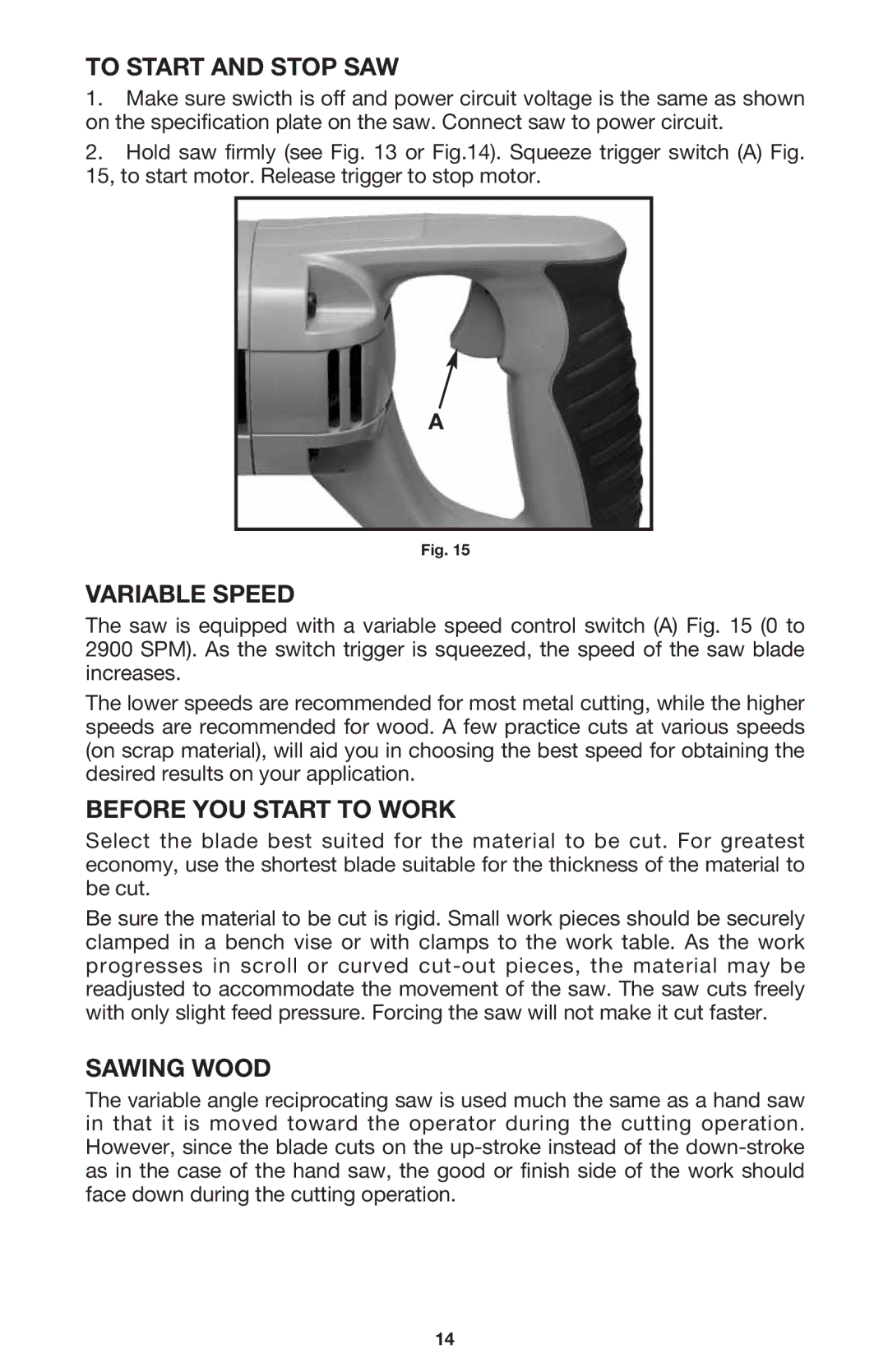
TO START AND STOP SAW
1.Make sure swicth is off and power circuit voltage is the same as shown on the specification plate on the saw. Connect saw to power circuit.
2.Hold saw firmly (see Fig. 13 or Fig.14). Squeeze trigger switch (A) Fig. 15, to start motor. Release trigger to stop motor.
A
Fig. 15
VARIABLE SPEED
The saw is equipped with a variable speed control switch (A) Fig. 15 (0 to 2900 SPM). As the switch trigger is squeezed, the speed of the saw blade increases.
The lower speeds are recommended for most metal cutting, while the higher speeds are recommended for wood. A few practice cuts at various speeds (on scrap material), will aid you in choosing the best speed for obtaining the desired results on your application.
BEFORE YOU START TO WORK
Select the blade best suited for the material to be cut. For greatest economy, use the shortest blade suitable for the thickness of the material to be cut.
Be sure the material to be cut is rigid. Small work pieces should be securely clamped in a bench vise or with clamps to the work table. As the work progresses in scroll or curved
SAWING WOOD
The variable angle reciprocating saw is used much the same as a hand saw in that it is moved toward the operator during the cutting operation. However, since the blade cuts on the
14
